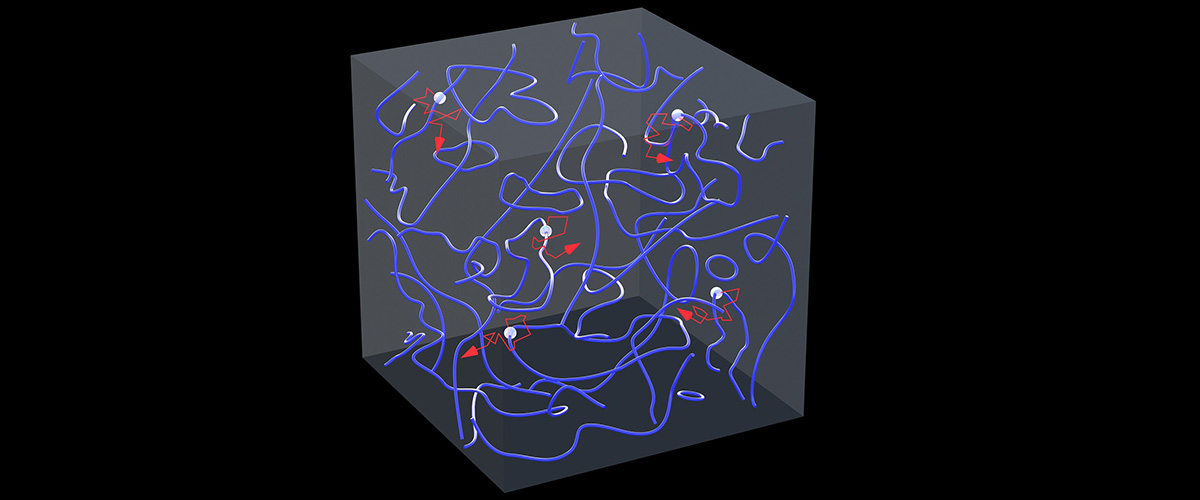Contact: Wei Guo
TALLAHASSEE, Fla. — Nobel laureate in physics Richard Feynman once described turbulence as "the most important unsolved problem of classical physics."
Understanding turbulence in classical fluids like water and air is difficult partly because of the challenge in identifying the vortices swirling within those fluids. Locating vortex tubes and tracking their motion could greatly simplify the modeling of turbulence.
But that challenge is easier in quantum fluids, which exist at low enough temperatures that quantum mechanics — which deals with physics on the scale of atoms or subatomic particles — govern their behavior.
In a new study published in Proceedings of the National Academy of Sciences, MagLab researchers managed to visualize the vortex tubes in a quantum fluid, findings that could help researchers better understand turbulence in quantum fluids and beyond.
"Our study is important not only because it broadens our understanding of turbulence in general, but also because it could benefit the studies of various physical systems that also involve vortex tubes, such as superconductors and even neutron stars," said Wei Guo, an associate professor of mechanical engineering at the FAMU-FSU College of Engineering, MagLab researcher and the study’s principal investigator.
The research team studied superfluid helium-4, a quantum fluid that exists at extremely low temperatures and can flow forever down a narrow space without apparent friction.
Guo's team examined tracer particles trapped in the vortices and observed for the first time that as vortex tubes appeared, they moved in a random pattern and, on average, rapidly moved away from their starting point. The displacement of these trapped tracers appeared to increase with time much faster than that in regular molecular diffusion — a process known as superdiffusion.

From left, Wei Guo, an associate professor of mechanical engineering at the FAMU-FSU College of Engineering, and Yuan Tang, a postdoctoral researcher at the National High Magnetic Field Laboratory, in front of the experimental setup. (Courtesy of Wei Guo)
Courtesy of Wei Guo
Analyzing what happened led them to uncover how the vortex velocities changed over time, which is important information for statistical modeling of quantum-fluid turbulence.
"Superdiffusion has been observed in many systems such as the cellular transport in biological systems and the search patterns of human hunter-gatherers," Guo said. "An established explanation of superdiffusion for things moving randomly is that they occasionally have exceptionally long displacements, which are known as Lévy flights."
But after analyzing their data, Guo's team concluded that the superdiffusion of the tracers in their experiment was not actually caused by Lévy flights. Something else was happening.
"We finally figured out that the superdiffusion we observed was caused by the relationship between the vortex velocities at different times," said Yuan Tang, a postdoctoral researcher at the National High Magnetic Field Laboratory and a paper author. "The motion of every vortex segment initially appeared to be random, but actually, the velocity of a segment at one time was positively correlated to its velocity at the next time instance. This observation has allowed us to uncover some hidden generic statistical properties of a chaotic random vortex tangle, which could be useful in multiple branches of physics."
Unlike in classical fluids, vortex tubes in superfluid helium-4 are stable and well-defined objects.
"They are essentially tiny tornadoes swirling in a chaotic storm but with extremely thin hollow cores," Tang said. "You can't see them with the naked eye, not even with the strongest microscope."
"To solve this, we conducted our experiments in the cryogenics lab, where we added tracer particles in helium to visualize them," added Shiran Bao, a postdoctoral researcher at the National High Magnetic Field Laboratory and a paper author.
The researchers injected a mixture of deuterium gas and helium gas into the cold superfluid helium. Upon injection, the deuterium gas solidified and formed tiny ice particles, which the researchers used as the tracers in the fluid.
"Just like tornadoes in air can suck in nearby leaves, our tracers can also get trapped on the vortex tubes in helium when they are close to the tubes," Guo said.
This visualization technique is not new and has been used by scientists in research labs worldwide, but the breakthrough these researchers made was to develop a new algorithm that allowed them to distinguish the tracers trapped on vortices from those that were not trapped.
Their research was supported by the National Science Foundation and the U.S. Department of Energy. The experiment was conducted at the National High Magnetic Field Laboratory at Florida State University, the world's largest and highest-powered magnet lab funded by the National Sceince Foundation and State of Florida.
Story by Trisha Radulovich, courtesy of Florida State University News




